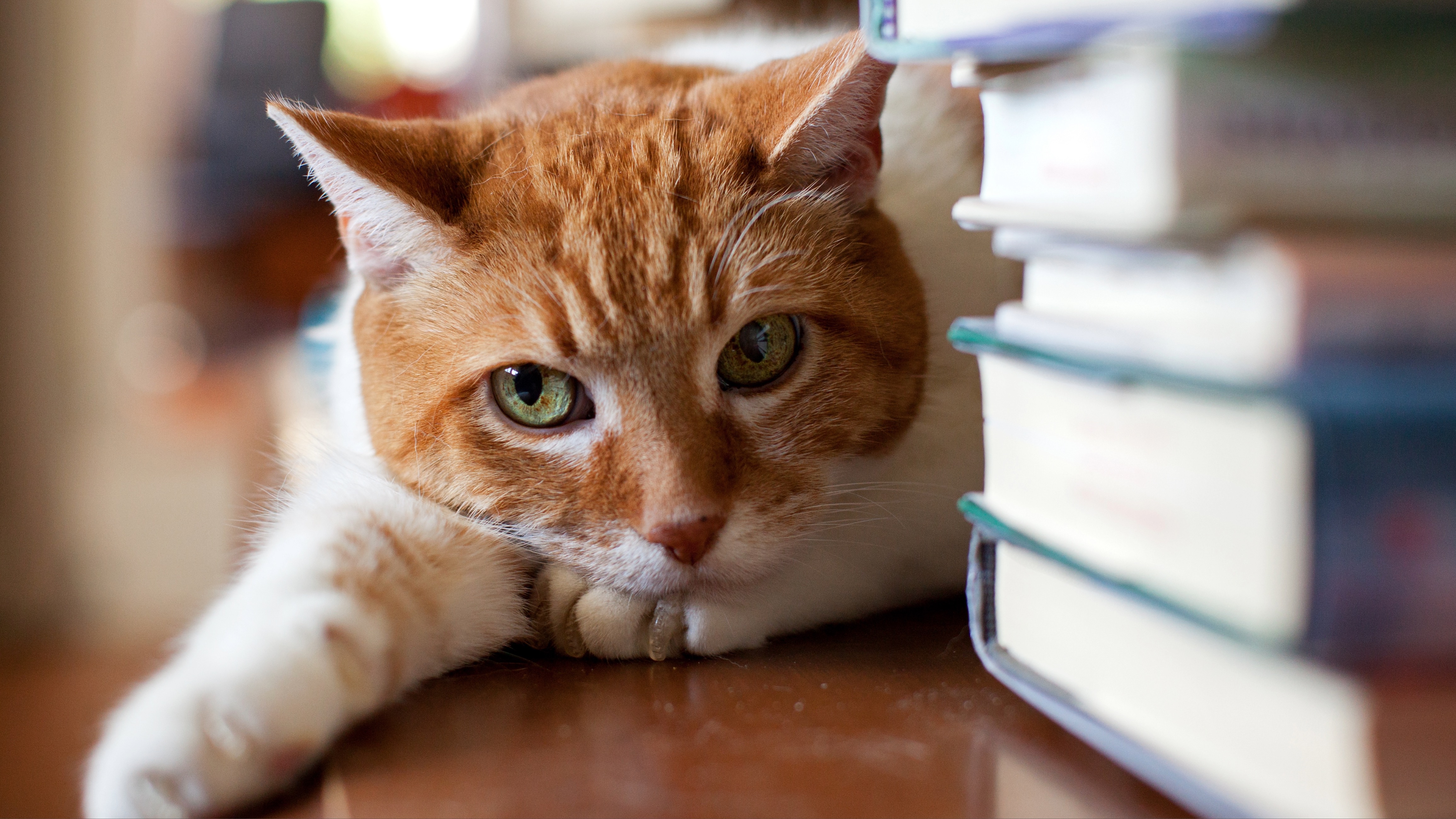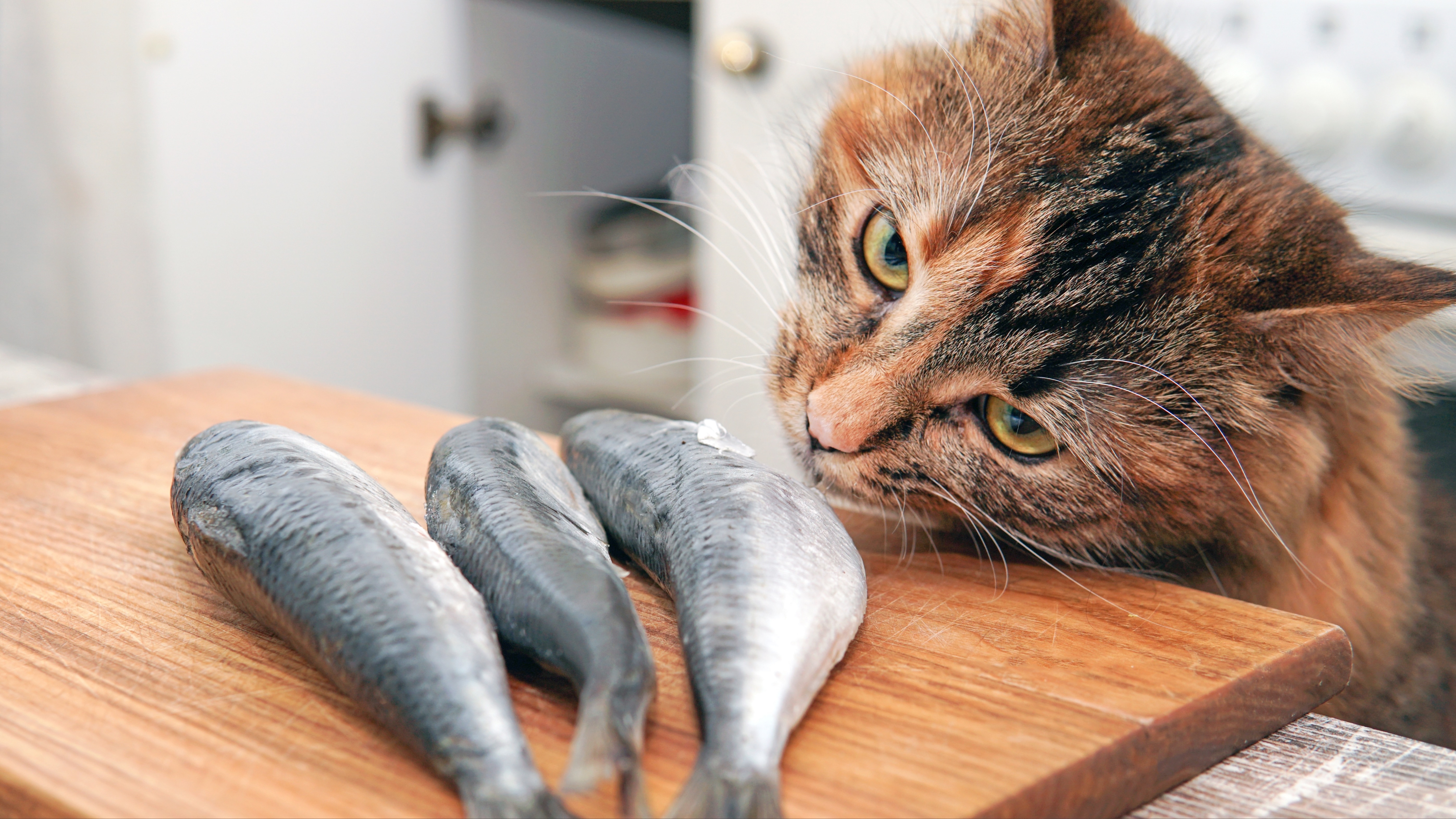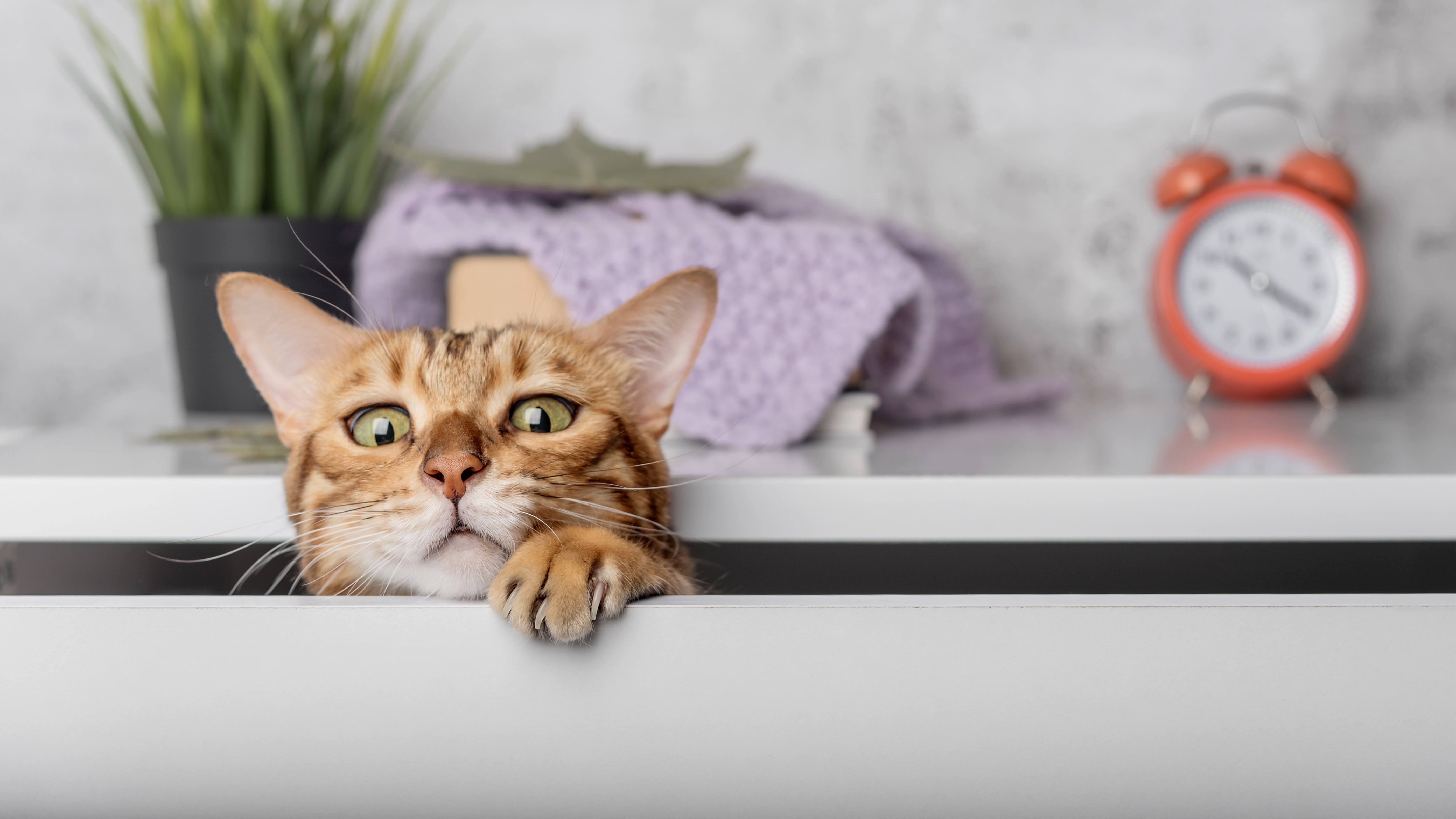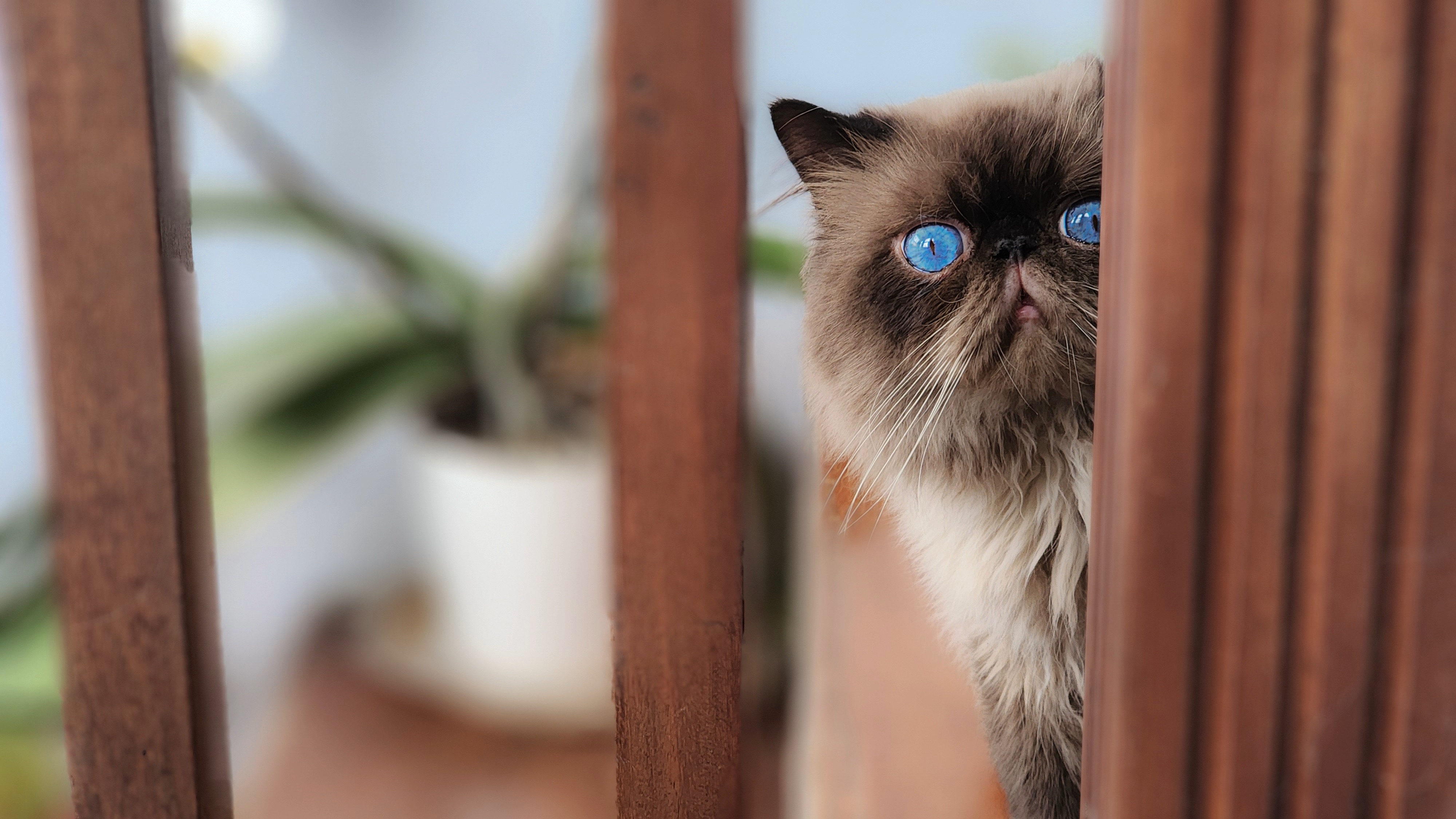13 fun cat brain facts that are sure to blow your mind
Impress your friends and family with these surprising cat brain facts!

Looking for some super fun cat-brain facts that you can whip out and use to impress your friends and family the next time they visit? Well, you're in luck, because we've got a whole bunch of them!
You likely already know that a cat's brain is wired to have them zooming around the house in hot pursuit of the best interactive cat toys, but did you know that our feline friends look to us for social cues?
Yes, your beloved bundle of fluff will look to you to know whether a situation has the potential to be dangerous and how they should go about reacting. They also have some concept of numbers, meaning they know if you've shortchanged them with their kibble portion at dinner. Pretty cool, huh?
Some of the funny things cats do can also be chalked up to that brain of theirs — like all that meowing that comes your way if you're five minutes late in feeding them. We have a ton more cat-brain facts for you, so keep reading (spoiler alert: number three will floor you!)
1. A cat's brain is divided into three main parts
A cat's brain is divided into three parts — the brain stem (which controls their basic life functions, such as their heart rate and temperature), the cerebrum (the center of conscious decision-making and complex problem-solving), and the cerebellum (which is involved in things like movement and motor control).
While these are the three main parts of a cat's brain, they also have other parts, including a hippocampus, amygdala, and frontal lobes.
2. It is both similar and different to a human brain
A cat's brain has all the same parts as a human brain, so the two are very similar in terms of their physical structure. However, there are some key differences that separate us from our feline friends.
PetsRadar Newsletter
Get the best advice, tips and top tech for your beloved Pets
The human brain makes up around 2.33% of our total body mass, whereas a cat's brain is approximately 0.91% of its body weight. Humans have a larger prefrontal cortex than cats, which means we're superior when it comes to planning and performing complex behaviors. We also have a better short-term memory.
However, before you think we humans are the superior species, it's worth noting that cats have a larger cerebellum which is why they're so much better at jumping, climbing, and hunting.
3. Cats have excellent long-term memories
Did you know that a cat's brain has 1,000 times more data storage than an iPad and operates a million times faster? It's true! That probably explains why cats have such great memories.
Cats have long-term and short-term memory just like we do, however,WWE2SAW their long-term memory is far superior to that of their short-term memory. A study published in Animal Cognition showed that while cats can use their short-term memory to find items that are hidden from them, their ability to find these items quickly decreases as time goes on.
On the other hand, scientists believe that cats are able to retain and recall important information in their long-term memory for up to 10 years.
4. A brain diet can help boost their cognitive function

Feeding your kitty a diet of the best dry cat food or the best-wet cat food is a great way of ensuring your feline friend's brain stays firing on all cylinders.
Just like with us humans, the diet a cat consumes plays a huge role in their cognitive function with ingredients such as taurine (an essential amino acid that plays a role in a whole range of neurological functions) and omega-3 and omega-6 fatty acids being particularly important for brain health.
5. Cats can recognize the voice of their humans
If you're like us and always looking for new ways to be the best cat owner you can be, you may wonder if all your hard work is actually paying off. Well, trust us — it is!
While cats are often viewed as being aloof, they bond with their humans deeply and their brains have no problem recognizing the voices of those they love.
A study published in Animal Cognition revealed that cats respond to the voices of their humans not through communicative behavior (such as vocalization and tail movement) but instead through a process known as orienting, where they move their head and ears in the direction of their human's voice.
6. They suffer from age-related cognitive decline just like we do
We often think of cognitive decline as something that only affects us humans, but our feline friends can suffer the same decline that we do. Feline Cognitive Dysfunction (FCD) affects more than 55% of cats aged 11 to 15 and more than 80% of cats aged 15 and older.
Worried your kitty may have FCD? Signs to look out for include sleep disturbances, disorientation, and reduced activity. Anxiety in cats is also a very common symptom of FCD and you may also notice that your cat forgets the learned habits they once knew so well — like how to use their litter box.
7. Cats have object permanence

Object permanence is the understanding that even when something is out of view, it still exists.
When you hang up the phone after speaking to a friend, you know that a friend still exists even if you can't hear their voice. If you leave a half-eaten peanut butter and jelly sandwich in the fridge, you know it's still there, even though you can't see it. And if your cat is currently snoozing in another room, you know your cat is still there, even if you're not with them at that moment.
All of these are examples of how object permanence works — and it turns out our cats possess it too.
Does that mean that if you hide one of the best cat toys in the house, your kitty will know their toy still exists even if they can't see it? Well, scientists are somewhat unclear on the extent of a cat's sense of object permanence with one paper published in the Journal of Experimental Psychology Animal Behavior Processes saying that cats can only understand object permanence when they see something disappear.
However, another study published in the Journal of Comparative Psychology found that cats can find objects even when they've not seen them being hidden.
8. Cats have some concept of time
Just like us, cats have internal body clocks that help them to move through their sleep and wake cycles. They're also very capable of picking up on bodily cues of when they're hungry or thirsty. Because of this, scientists believe that cats do have some idea of how much time has passed between each of these various activities.
While they certainly can't tell time in the same way we can, a study published in the Acta Neurobiologiae Experimentalis journal found that cats know the difference between a five-second and an eight-second time difference. This may help explain why they meow the house down when you're a few minutes late refilling their bowl with the best cat food!
9. They're about as smart as a human toddler
While comparing feline and human intelligence is always tricky, one of the little-known facts about cats and dogs is that scientists believe both have around the same level of intelligence as a two-year-old toddler.
Although, can we just put this out there — we wouldn't be at all surprised if our feline friends are way smarter than that and simply choose not to let on to the scientists that are trying to test them!
10. Cats have around 250 million brain cells
Did you know that cats have around the same number of brain cells as brown bears? It's true! Cats have approximately 250 million brain cells, which is less than dogs (who have around 400 to 600 million) and humans (who have a mind-blowing 21 to 26 billion brain cells).
But just before you think that we're a whole lot smarter than our feline friends, not so fast. Scientists believe that while cats do have a lot fewer brain cells than we do, their skill level in certain areas — such as spatiotemporal recognition and balance — is far superior to that of us humans.
11. Our feline friends can recognize their names

No, you're not imagining it when Madame Fluffypants comes flying through the door whenever you call her name for dinner — she really does know that you're speaking to her!
Cats recognize their name and their parent's voice, although whether they choose to respond to either of these things is another matter entirely.
While cats don't understand the meaning of words, what they do recognize is the sound associated with a specific word and its connection. Very early on, a cat will come to connect the sound of their name with themselves, which means that every time they hear that sound they'll know you're speaking to them.
So there you go, when it comes to the question 'Do cats know their names?', the answer is a resounding yes!
12. They can get brain freeze
Have you ever eaten a bowl of ice cream a little too fast and had it go straight to your head? If so, you'll know the unpleasant feeling that comes with having a brain freeze. And it turns out our cats know what it feels like too.
Videos of cats experiencing brain freeze regularly do the rounds on social media, so scientists are confident they feel the same pain we do when they eat something too cold.
Because of that, it's best to avoid feeding cold treats to your kitty and stick to kibble or the best cat treats.
13. Your cat's brain is about the size of your pinkie finger
A cat's brain is roughly two inches long and it weighs approximately 25 grams — that's about the same size as a human pinkie finger!
These astonishing cat brain facts may have already convinced you to welcome a new kitty into your home, but just in case you're still unsure, here's 32 reasons to adopt a cat.

Kathryn is a freelance writer who has been a member of the PetsRadar family since it launched in 2020. Highly experienced in her field, she's driven by a desire to provide pet parents with accurate, timely, and informative content that enables them to provide their fur friends with everything they need to thrive. Kathryn works closely with vets and trainers to ensure all articles offer the most up-to-date information across a range of pet-related fields, from insights into health and behavior issues to tips on products and training. When she’s not busy crafting the perfect sentence for her features, buying guides and news pieces, she can be found hanging out with her family (which includes one super sassy cat), drinking copious amounts of Jasmine tea and reading all the books.
